Chicken is the most widely consumed meat in the world, to the tune of about 118 million tons worldwide and in the US, roughly 100 pounds per person per year. That’s a whole lot of thighs, breasts, wings and drumsticks. With all this poultry farming comes a dizzying array of labels that aim to inform the consumer on what sort of bird they’re getting and how it was raised. You’ve likely seen at least a half-dozen of them emblazoned on chicken packaging in the store; organic, pasture-raised, free range and certified humane, to name a few. But if you’ve ever wondered what chicken labels actually mean and which ones you should look for, you’re not alone.
With ever-changing USDA regulations and fancy footwork from poultry farmers and food marketing firms, chicken labels are plentiful and also rather confusing. Here, I’ll break down the most common chicken labels so you can shop smarter, separate the important classifications from marketing nonsense, and get the best chicken at the best price.
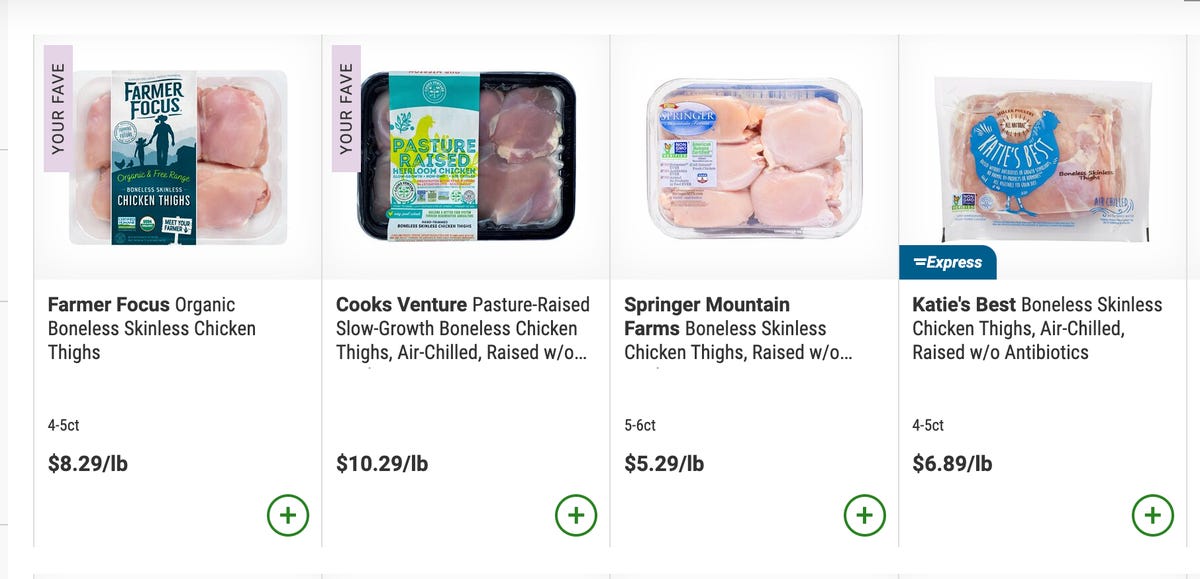

There is no shortage of labels accompanying chicken. Some mean much more than others.
Screenshot by David Watsky/CNETFirst, it’s important to know that every label for a chicken package must be submitted and approved by the US Department of Agriculture. As you might already know, there are millions of dollars spent each year on behalf of major chicken producers to lobby for more lenient — and in some cases, more strict — labeling. That’s all to say: these labels should be ingested with a certain degree of skepticism.
Read more: The Best Places to Buy Chicken Online
Chicken grades
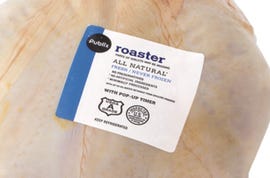

The grade a chicken gets is based on how it appears and not how it was raised or handled.
Screenshot by David Watsky/CNETThese USDA signifiers aren’t typically advertised as loudly as other labels, but it’s there on every package, both for whole chicken and parts. After inspection, the chicken is given a grade of A, B or C by the Agricultural Marketing Service, the arm of the USDA that inspects poultry and other agriculture. The poultry grade refers to the general quality of the bird, including the plumpness and roundness of meat, consistency of skin and cleanliness of the bird on the whole (presence of feathers, discoloration or skin tears), with Grade A being the best. Here is a more complete breakdown from the USDA on what each chicken grade means.
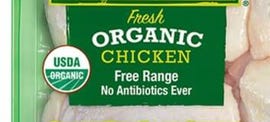

The organic designation speaks mostly to what a chicken was fed and less to the physical conditions in which it was raised.
Screenshot by David Watsky/CNETOrganic Chicken
The “organic” label is a good one to look out for, but keep in mind it just means that the chickens have been fed a certified organic diet and often — but not always — means the farming practices used in feeding the birds are better. Organic chicken is always free-range (the bird has access to the outdoors for at least some part of the day) and has not been given routine antibiotics.
Beyond that, the organic chicken label doesn’t signal anything about a chicken’s quality of life or humane practices during their life, transport or slaughter. In many cases, organic chickens may still experience some of factory farming’s most notorious practices.
Antibiotic-free chicken
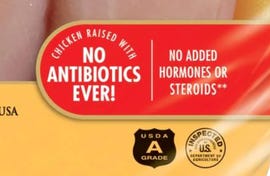

Antibiotic-free chicken typically means it was not given routine antibiotics but may have been given them if the birds became sick. Hormones and steroids cannot ever be legally given to poultry, according to USDA regulations.
Screenshot by David Watsky/CNETThe use — or nonuse — of antibiotics is one of the more contentious labels given to chicken. Much of the chicken you’ll see for sale in grocery stores sports an “antibiotic-free” or “raised without antibiotics” label. This means the chickens were not routinely given preventative antibiotics, which many deem harmful, but it doesn’t mean they weren’t given antibiotics if they got sick.
While the overuse of antibiotics can be problematic, some people within the industry argue there has been a massive overcorrection via pressure from animal rights groups to mostly eliminate antibiotics from poultry farming since they are a key tool in keeping large populations of birds healthy, when used correctly. This correction is largely due to the past chronic overuse of preventative antibiotics. These days, all antibiotics must be deemed necessary and prescribed by a vet before being administered.
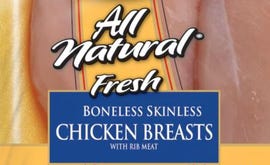

A label declaring chicken to be “all natural” is pure marketing jargon and signifies nothing.
Screenshot by David Watsky/CNETNo added hormones or steroids
This label means very little since FDA law prohibits any use of added steroids or hormones. If a poultry brand is touting this as their big claim, there’s a good chance it’s to distract you from the ones that aren’t there.
All-natural chicken
This is a marketing term and means nothing. There are no requirements for a chicken to be labeled all-natural; if you see it, you should probably assume it is anything but.
Labels pertaining to the treatment of chickens
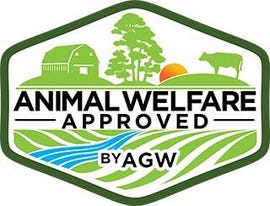

According to the ASPC, Animal Welfare Approved chicken is raised with the most rigorous standards in the industry as it pertains to a chicken’s conditions during raising, transport and slaughter.
AGWAnimal Welfare Approved Chicken
According to the American Society for the Prevention of Cruelty to Animals, this is the most strict label given to poultry based on overall humane practices. AWA chicken is audited yearly to ensure the birds have adequate indoor and outdoor space, breed health requirements, natural light and a maximum transport time of four hours.
Certified Humane Chicken
This label also represents a significant improvement over conventional standards. It means outdoor access for ruminants, pigs and poultry when accompanied by the words “free-range” or “pasture-raised.” This label signifies that chickens are raised with most of the same requirements as AWA but not all, including no required natural light and slightly less stringent breed health requirements. Compliance audits for this label are also required once a year.
Animal-Welfare Certified Chicken
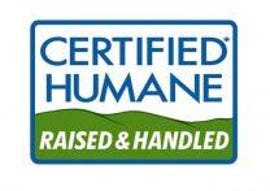

“Certified humane” is another strict label indicating chicken was raised using humane practices.
Screenshot by David Watsky/CNETThis six-level rating program for animals raised for meat and eggs is slightly more complex. According to the ASPCA, each successive level represents progressively higher welfare and includes all requirements of those below it. Cage confinement, hormones and subtherapeutic antibiotics are prohibited at all levels, standards extend to transport and slaughter, and compliance is verified every 15 months via audits.
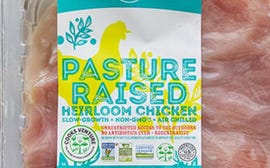

Pasture-raised chicken must meet certain criteria for outdoor roaming space.
Screenshot by David Watsky/CNETPasture-raised chicken
Because there’s no legal definition of this term, “pasture-raised” is hard to verify, though it implies birds spent significant time outdoors and in a pasture. The USDA requires chicken labels to be “accurate,” but without formal guidelines, this one has a lot of wiggle room.
Free-range chicken
This is another label you’ve likely seen on egg cartons and chicken packages that is misleading once you dive into the criteria. “Free-range” indicates that chickens had access to the outdoors, but there are very few requirements for how much or how big that outdoor space is. In many cases, poultry coops are set up so the chickens don’t even use the outdoor space.
Cage-free chicken
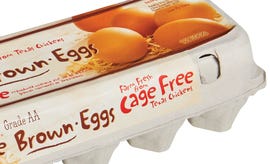

This mostly nonsensical label is likely a distraction if you see it front and center on a pack of chicken. That’s because no broiler chickens can be raised in cages and must be kept in large houses instead. This distinction is notable, however, when speaking of eggs, since laying hens can be and are often raised in cages.
For more on labels regarding the humane treatment of chicken, check out this chicken labeling chart from the ASPCA.
Read more
The information contained in this article is for educational and informational purposes only and is not intended as health or medical advice. Always consult a physician or other qualified health provider regarding any questions you may have about a medical condition or health objectives.